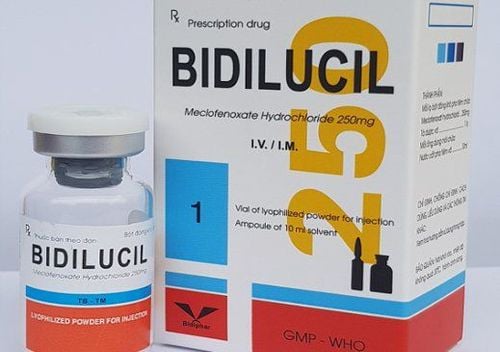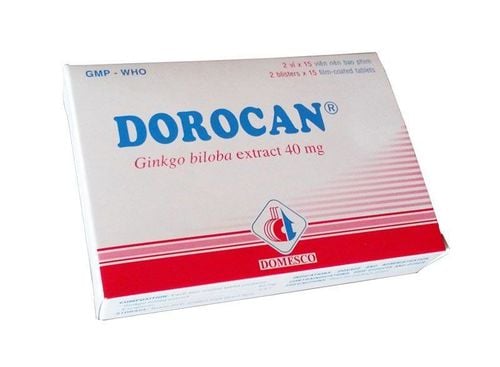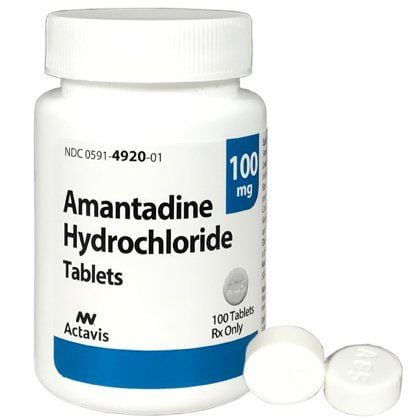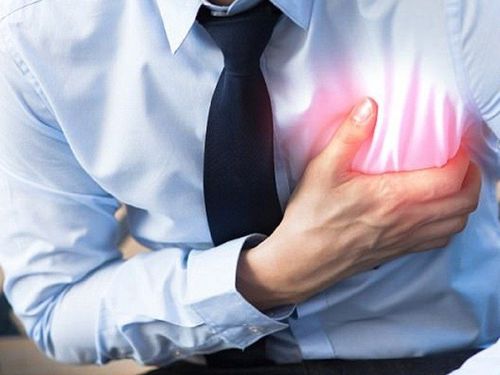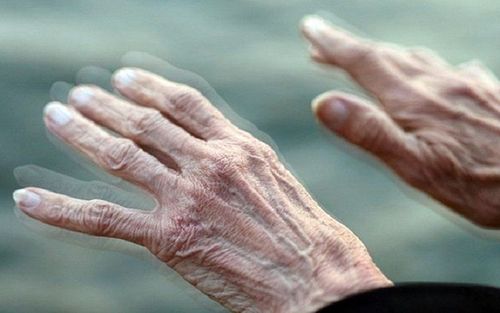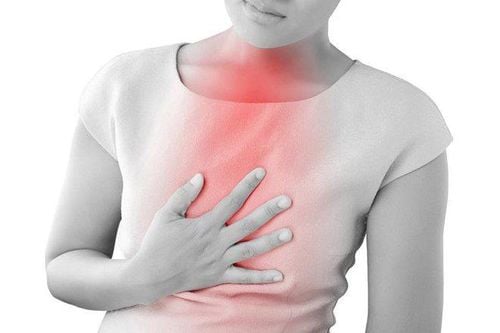This is an automatically translated article.
Posted by Specialist II Khuc Thi Nhan - Neurologist - Outpatient Department - Vinmec Times City International Hospital
Parkinson's disease is a chronic degenerative disease of certain brain tissues (striatum, black crescent) leading to decreased production of Dopamine. The disease is the second leading cause of disability in the elderly after cerebrovascular diseases. Parkinson's disease is progressive and requires lifelong treatment, which is costly to the family and society. However, if diagnosed, early and timely treatment can reduce symptoms as well as the progression of the disease.
1. Causes of Parkinson's disease
Parkinson's disease was first described in 1817 by the English physician James Parkinson, from which the disease bears his name. Parkinson's disease is characterized by tremors, rigidity, and decreased movement.
Until now, scientists have not found the cause of Parkinson's disease, but the disease is related to genetic factors (family) and/or exposure to weed killers (MTTP: 1-methyl-4 phenyl-1,2,3,6-tetrahydropyridine).
Parkinson's disease is found everywhere, the frequency is 1 case/700 population, the rate is equal in both men and women. Most cases are diagnosed between the ages of 40 and 70, with an average of 55 years of age.

Bệnh Parkinson xuất hiện phổ biến ở những người cao tuổi
2. Clinical symptoms of Parkinson's disease
2.1. Initial symptoms
The disease progresses slowly with symptoms such as rapid fatigue, muscle weakness, muscle aches (shoulder pain), decreased sense of smell (decreased ability to distinguish odors from food), these are nonspecific symptoms. characteristic of the disease.
2.2. Main symptoms of the disease
Symptoms of Parkinson's disease are: Tremor, stiffness (increased muscle tone), decreased movement.
Run
Run at rest, small tremor, about 4 - 8 cycles/second. Tremor disappears with sleep and voluntary movement but increases with emotion, fatigue, and when trying to concentrate; Tremor usually begins on one side and is mainly in the fingertips (movements like counting money or rolling pipe tobacco), it can also be in the legs.
Increased muscle tone (stiffness)
Stiffness at first on one side of the body, then spread to the opposite side and finally the whole body resulting in movements that are halted or hesitant during warm-up.
Reduce movement
The patient blinks less; reduced gestures with non-expressive facial expressions; reduce arm swing when walking; difficulty in performing rapid alternating movements such as hand pronation...
Movement disorders manifest: when walking, take small steps with stomping at warm-up; small letters; monotonous hard to say...
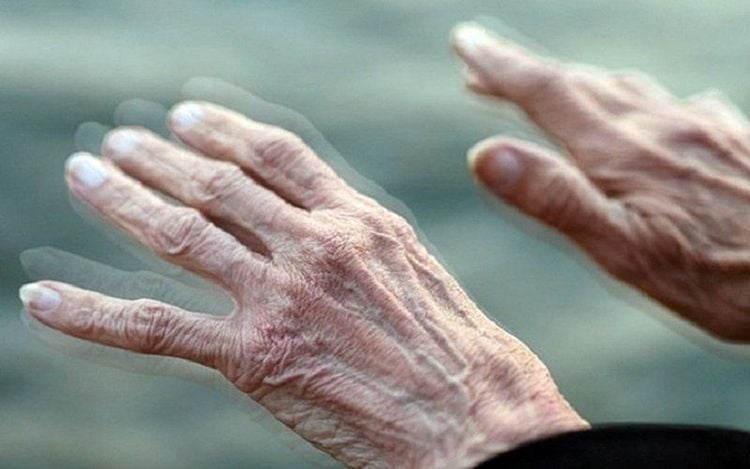
Run chân tay là một trong những dấu hiệu của bệnh Parkinson
2.3. Other symptoms
Palpitations, sweating, sleep disturbances, constipation, joint pain, back pain, impotence in men, postural hypotension, bladder sphincter disorders, depression (sadness) , depressed)... to the final stage, the patient may have difficulty breathing and swallowing, physical exhaustion.
3. Diagnosis of Parkinson's disease
3.1. Diagnosis of Parkinson's disease
Diagnosis of Parkinson's disease is mainly based on clinical symptoms (tremors, stiffness, and decreased movement first appearing on one side of the body and then on the opposite side). The role of magnetic resonance imaging or computed tomography of the brain helps to rule out other causes such as stroke, brain tumor...
Diagnosis of Parkinson's: there are 5 stages. Specifically:
Stage I: Clinical symptoms on one side of the body, not affecting daily activities. Stage II: Clinical symptoms on one side of the body but affecting daily activities. Stage III: Clinical symptoms on both sides of the body, change in gait posture, no serious disability, complete autonomy. Stage IV: More severe disability, still able to walk, limited autonomy. Stage V: Impossible to walk (must be confined to a wheelchair or bed), loss of self-control.
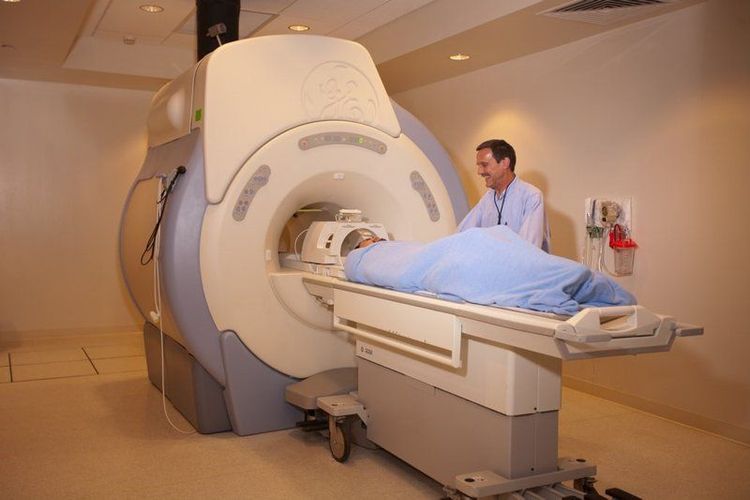
Cộng hưởng từ giúp chẩn đoán bệnh Parkinson
3.2. Differential diagnosis of Parkinson's syndrome
Have symptoms of tremor but not Parkinson's disease but due to other causes, symptoms appear on both sides of the body. Parkinson's syndrome is encountered in the following cases: family history, recurrent cerebrovascular accident, repeated traumatic brain injury, encephalitis, treatment with neuroleptics (Aminazin; Haloperidol...)
Parkinson's disease responds Good response to Levodopar (L-dopar), in contrast to Parkinson's syndrome only about 20% respond to L-dopar.
4. Treatment of Parkinson's disease
The goal of Parkinson's disease treatment is to relieve symptoms of the disease such as tremors, stiffness, and decreased movement. Improve fitness. Accordingly, the disease needs lifelong treatment, including drug therapy and rehabilitation exercises. Depending on the case, it can be combined with surgery or stem cell transplant...
4.1. Drug therapy
Currently there are many drugs to treat Parkinson's disease, but depending on the clinical symptoms, depending on the age and stage of the disease, there are different drug combinations. The drugs to treat Parkinson's are as follows:
L-dopa (Modopar, Madopar):
This is the drug that works best with the symptoms of Parkinson's disease, especially with symptoms of hypertonia and decreased movement but little effect on tremor.
The effect of the drug is best recorded during the first years of treatment "honeymoon phase", this period lasts 3-4 years. Then the drug will slow down and the effect will be short (ON/OFF phenomenon)
Undesirable effects (side effects): nausea, vomiting, stomach pain, orthostatic hypotension, arrhythmia heart, confusion, hallucinations (unusual sight or hearing, smell...), dyskinesia (abnormal movements but delayed onset).
Accordingly, patients should avoid taking L-dopar with high doses of Vitamin B6 because it reduces the effect of the drug.
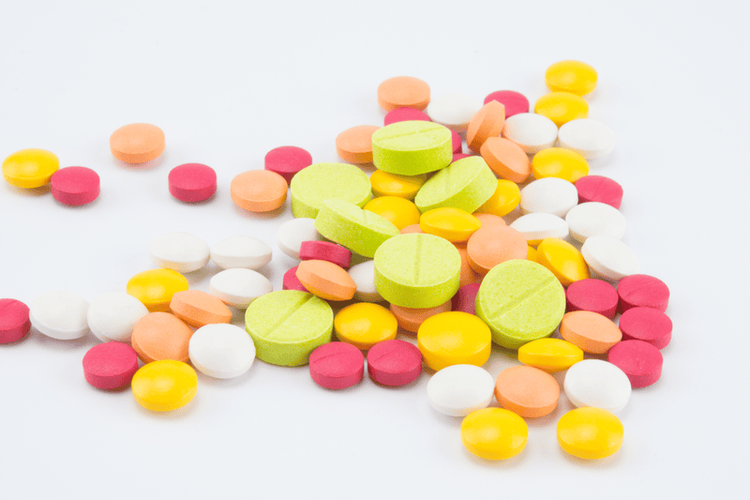
Bệnh nhân Parkinson được chỉ định dùng thuốc nhằm điều trị bệnh
Anticholinergics: Trihexyphenidil (Artan)
Drugs that work with tremor and increase tone, but have no effect on decreased movement. Unwanted effects that patients may experience: confusion, hallucinations (especially in the elderly), dry mouth, constipation, urinary retention. Avoid using for people over 70 years old, prostate cancer, Glocom.
Dopamine agonists
Pramipexole and Ropinirole, drugs can be used as monotherapy or in combination with L-dopar to avoid increasing the dose of L-dopar (because L-dopar in high doses can cause dyskinesia).
COMT inhibitors (Tolcapone, Entacapone)
Prolong L-Dopar use by blocking dopamine metabolism. To be used only in people who have been treated with L-dopar but have been less effective (ON/OFF phenomenon) or when response to treatment has been inadequate.
MAO Inhibitors (Rasagiline, Selegiline)
This is a single agent or an adjunct to L-dopar that blocks the degradation of Dopamine to prolong the effects of L-dopar.
Amantadine
A drug to treat influenza A, but is indicated in Parkinson's disease in combination with Levodopar when side effects (dynamism) or lack of effect occur. The drug is taken in gradually increasing doses and should not be stopped suddenly.
4.2. Non-drug therapy
Besides medication, rehabilitation plays an important role in helping patients improve their quality of life, including rehabilitation exercises for movement, language, exercise, walking...
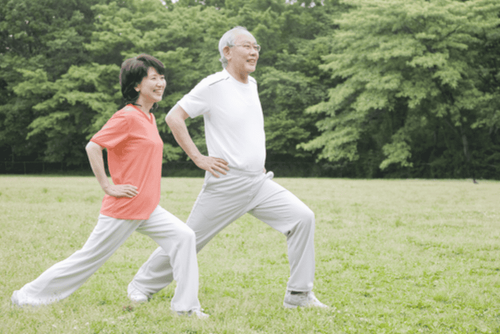
Tập thể dục có tác dụng hỗ trợ điều trị bệnh Parkinson
4.3. Surgical treatment
Today with the development of medicine, in Vietnam and advanced countries in the world, surgical treatment method (deep brain stimulation electrode placement) has been applied in cases that do not respond to drugs. Treatment helps Parkinson's patients improve their quality of life.
4.4. Stem cell transplant
With the advancement of science and technology, in the future, scientists around the world can conduct stem cell transplantation for Parkinson's patients.
5. Caring for Parkinson's patients
The disease progresses slowly, gradually getting worse, until the end stage, the patient appears to have difficulty swallowing, eat poorly leading to exhaustion. Therefore, diet, exercise and body hygiene need to be focused. Specifically:
Diet: Patients need to eat enough nutrients, easy-to-digest foods, lots of fruits and vegetables, drink lots of water to avoid constipation. Hygiene mode: body hygiene, oral hygiene... Exercise mode: daily exercise and exercise. Regular activities will make the muscle system stronger and more flexible. Walking is one of the best methods of exercise, and along with medication, it helps to increase the flexibility of the patient's body. In addition, patients can refer to some simple exercise movements (extracted from the Reference document for health workers in 2010) as follows:
Walking and turning: walking in a straight line, step by step Take long steps and separate your legs for better balance, swing your arms steadily, when you need to turn around, walk in a circular arc. Practice "walking" while sitting: sitting on a chair with a backrest, lift the right and left knee in turn as if walking. Repeat this movement 10 times. Get up from bed while lying down: turn over and bend your knees. First, put your feet off the bed, then use your hands to support the surface of the bed to sit up. Shoulder pull: Sit or stand with your back straight, hands in front, hands and elbows close together. Reach your arms out to the sides as far as possible so that the shoulder blades behind your back are close together. Bring your hands back to the original position in front of you. Repeat this movement 10 times.

Bên cạnh việc điều trị bằng thuốc, người bệnh cần có chế độ ăn uống khoa học, dinh dưỡng
Stand up and sit down : choose recliners with armrests and firm seats. When you want to stand up, you must lean forward and use the handrails on the edge of the chair to push up. When you want to sit down, turn your back to the chair and lean forward and then sit down slowly, using your hands on the chair handles. Twist movement: sit on a chair with your hands on your shoulders and rotate your upper body from right to left and vice versa. Do it as quickly as possible. Repeat this movement 10 times. Parkinson's affects the quality of life of patients. However, if cared for, treated, and changed in the lifestyle and exercise regime, the patient can still lead a normal life. Medications can help people cope with mood disorders, such as depression and anxiety.
Caring for someone with Parkinson's can be challenging. As motor skills decline, simple tasks may become more difficult, but Parkinson's patients may struggle to maintain independence. Both medication and disease can lead to mood swings. Therefore, people with Parkinson's disease need understanding and empathy so that they can rise and fight the disease.
Vinmec International General Hospital is the address for examination, treatment and prevention of diseases. When performing the examination process at Vinmec, customers will be welcomed and used modern facilities and equipment along with perfect medical services under the guidance and advice of experts. Good doctors, well-trained both at home and abroad.
Please dial HOTLINE for more information or register for an appointment HERE. Download MyVinmec app to make appointments faster and to manage your bookings easily.
1. Le Quang Cuong (2002), Parkinson's Disease and Syndrome, Medical Publishing House.
2. Reference Manual for Healthcare Professionals 2010.
3. First aid (Tr: 287-288)
4. Handbook of Parkinson's Disease (Rajesh Pahwa, Kelly E. Lyons CRC Press, Mar. 2007 - 520
5. C.Hausser –Hauw, B. Jarraya, F. Bourdin Vivre avec la maladie de Parkinson Albin Michel, 2016.




